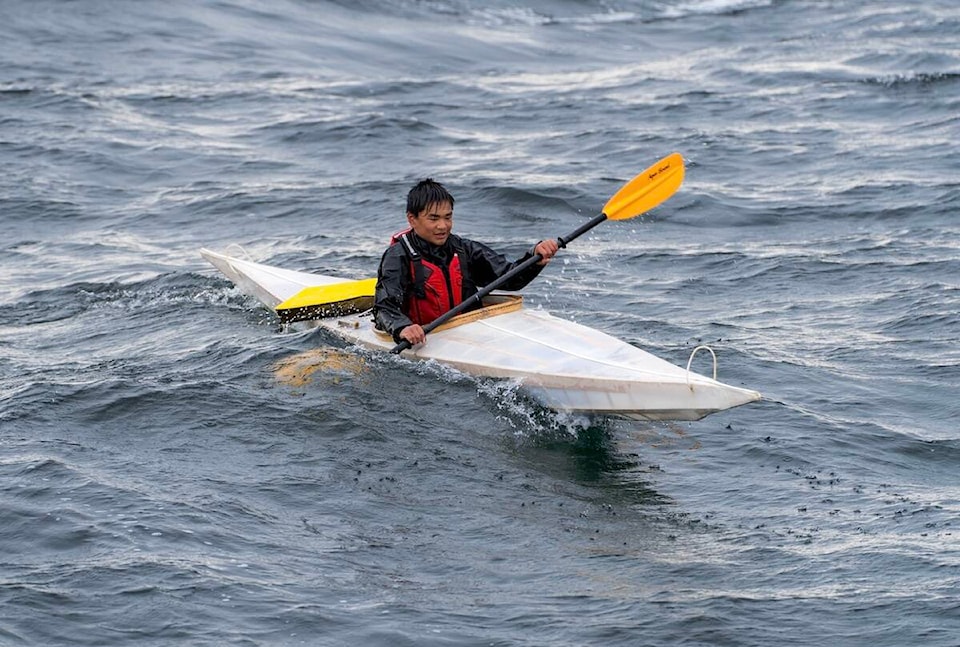Chesterfield Inlet’s Victor Sammurtok School may have one of the smaller student bodies in Nunavut. But there is no doubt it has the territory’s biggest and most popular qajaq program.
“We take advantage of being a small school. There’s certain things we do that other schools might not necessarily be able to do,” said teacher Glen Brocklebank.
qajaqing has become a right of passage for Grade 9 students to start off the school year ever since Brocklebank started the program with his wife and fellow teacher Ana Leishman in 2004.
Their inspiration came after the pair purchased a book on how to make a qajaq in 2002. The following year they bought the necessary materials and enlisted the help of Elder Joe Issaluk to make their first ever qajaq from scratch.
It was hung in the back of one of the schools’ classroom, which eventually piqued the curiosity of students.
“When the students came back from professional development week they asked when do we get to build them,” Brocklebank said.
By 2005 the school was starting on the water with nine qajaqs. Today the school has 32 qajaqs, thanks in part to the program being awarded the Arctic Inspiration prize in 2017.
They have also accumulated more than $150,000 worth of safety equipment over the years.
“This is a way where we can get our students who are not as academic to feel like they can excel and do really well at school.”
“I taught canoeing in the south and never have I seen students pick it up faster than with Inuit. There’s something instinctual about it.”
In total the students spend 10 days qajaqing for the chance to earn up to three high school credits. The program starts with basic safety skills, followed by a swimming test, after which they are taught how to safely exit a qajaq if it tips over.
Once students have proven they are capable of that, they can graduate to paddling on lakes before they are finally allowed out onto the ocean.
“It’s awesome to watch them paddle out into bigger waves and then turn around surf them back,” said Brocklebank.
Grade 9 student Kevin Niatok said he was a “little bit panicky” when he first got into the qajaq but he soon fell in love with it.
Next thing he knew he was surfing big waves on the ocean.
He even ended up breaking his toe on the first day of the program but that didn’t stop him from getting out on the water.
“I told my mom I wasn’t going to stop because I wanted to keep qajaqing,” he said. “She’s very proud of me.”
